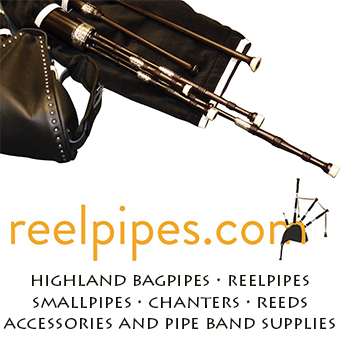
Theory Top-Up
by Tim Cummings
Piping Today #73, 2014.
When people refer to musical scales, they are normally referring to the conventional major or minor, seven-note, “diatonic” scales. If you’ve been following the recent Piping Today articles on music theory, you’ll know that seven-note scales can also be something other than just major or minor; they can be “modal”, involving various mixes of major and minor.
What may be news to you, however, is that some scales have greater or fewer than seven notes. There are creatures like the octatonic scale (eight notes), the Spanish 8-tone scale, the whole tone scale (six notes), the Japanese Kumoi scale (five), microtonal scales (pick a number), and many others, some of which have almost otherworldly qualities.
In our piping world we tend to associate with seven-note scales and those having fewer notes — six- and five-note scales, generally. In this piece, I’d like to highlight a six-note scale based on A. This scale forms the basis of roughly 10% of our light music repertoire. That may not seem very significant, but if I mention the tunes The Man from Skye, MacGregor of Rora, P/M Donald MacLean of Lewis, Highland Harry, and Lexy McAskill, you may not only be familiar with those tunes, but also recognise they all share a particular feel to them in terms of their associated mood or gist. And if you were to compare that group of tunes to those like The Clumsy Lover, The Bloody Fields of Flanders, Leaving Port Askaig, The Caledonian Canal, and Alick C. McGregor, you would quickly recognise the difference in mood between the first group of tunes and the second, despite them all being the same types of tunes (respectively) and despite them all being based in some version of the general key of A.
The first group of tunes are a little edgier, having a somewhat more serious, haunting, determined, or maybe untamed quality to them. What makes these tunes so different from the second group is simply this: the first group avoids Cs altogether. An entire note is left out of the scale, and it’s not just any note, it’s the very influential third note of a standard seven-note scale. It’s the very note that has the power to make a tune major (‘happy’, using a C#) or minor (‘sad’, with a C-natural). The first group of tunes aren’t happy, but nor are they particularly sad — there’s more neutrality, perhaps even a little ambiguity. And there’s a gap, hence many folks referring to scales like these as being “gapped”. (You would also be correct in calling them “hexatonic”, meaning six tones, but that term doesn’t seem to be used very often.) This is what a typical gapped scale in A looks like in our piping world:

Other tunes based on a gapped A scale (skipping the C):
• Alexander MacAskill of Berneray (jig)
• The Bulgarian Bandit (hornpipe)
• Captain Carswell (2/4 march)
• Craig-a-Bodich (strathspey)
• Cutting Bracken / Tha Mi Sgith (strathspey, jig, march)
• Duncan Johnstone (hornpipe)
• The Haughs of Cromdale (2/4 march, strathspey)
• The Hills of Glenorchy (6/8 march)
• Malcolm Daleskie (2/4 march)
• Molly on the Shore (reel)
• Murdo MacKenzie of Torridon (6/8 march, jig)
• The Plagiarist (reel)
• The Royal Scottish Pipers’ Society (2/4 march)
• The Smith of Chillichassie (reel)
• Wondrous Love (air/hymn)
You may also be interested to know that 34% (23 tunes) of the ceòl beag in Duncan Johnstone’s tune book, His Complete Compositions, are based on the gapped A scale. That’s more than three times the norm for pipe tune collections that I’ve sampled, and so perhaps this key could be nicknamed ‘the Duncan Johnstone key’ (much like D-Major could be ‘the Neil Dickie key’).
My usual closing reminders: Highland pipers, don’t forget your pipes are transposing instruments, meaning that a tune written in a version of A will actually sound in the key of B flat when played on a standard set of Highland pipes. This is a crucial bit of information should you find yourself playing with other instruments like guitars, fiddles, church organs, and the like. Smallpipers, keep your drones tuned to A and/or E when playing tunes in any version of the key of A. For tunes specifically based on a gapped A scale, you can tell any chord-playing accompanist just that; and if they stare at you blankly, try offering “A-modal” as a more generic way of describing a key that is neither major nor minor. And once again, if you are playing a medley of tunes in various keys, it’s best to use A drones only. •
Tim Cummings plays, teaches, writes and publishes bagpipe music. His Theory Top-Up series has been running in Piping Today magazine for more than five years.


